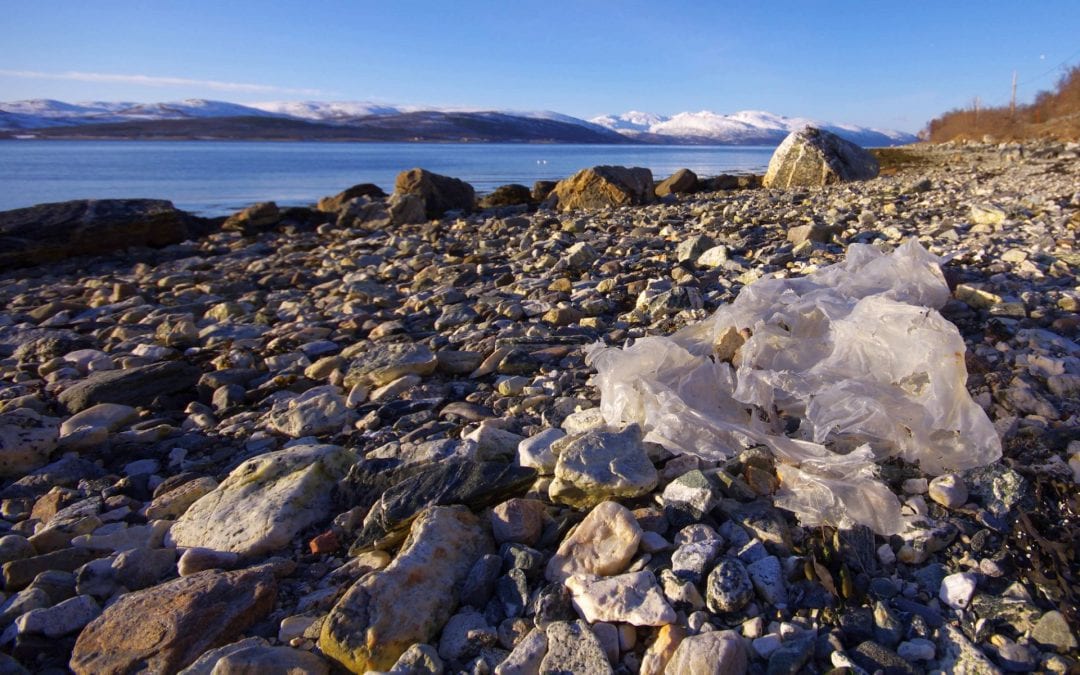By Julie Anne Hope
Julie Anne Hope discusses how microplastics are interfering with our marine ecosystems.
We are now living in an age of plastic and really struggling to deal with the plastic waste we produce globally as it is extremely durable and does not degrade.
It has been estimated that up to 12.7 million tonnes of plastic end up in the marine environment annually. As larger pieces of plastic breakdown to smaller and smaller fragments these can become microscopic and hidden to the naked eye – it is believed that up to 80% of plastic waste is ‘unseen’. These tiny fragments never fully degrade and we are only beginning to scratch the surface of this global problem.
While most research to date has focused on the impacts of ingestion in fish, shellfish, and larger animals, this pollutant may also affect key processes and functions at the base of the marine food web. If the accumulation of these microplastics or their associated chemicals and toxins alter key processes and the way soft sediments function, the effects will cascade through the entire marine ecosystem.
We often don’t think about the small things that we cannot see but they are there. This is true of microplastic particles (<5mm), but also of the small but important microalgae, shellfish and worms that live in our coastal sediments.
Microalgae living on the seafloor are the main primary producers in estuarine sediments. Their presence, and the carbohydrates they produce, bind sediment particles together, which can significantly influence the behaviour of sediment and how it moves around our coastline. We believe this may also influence the distribution of microplastic particles, and that microplastic may accumulate on the surface of sediments where these microalgae are more abundant. To find out whether this is the case, we are looking at the association between microalgae and microplastics in soft sediment habitats such as estuaries and harbours around NZ.
We also need to know whether the accumulation of microplastics in coastal sediments is affecting the ‘health’ or integrity of the ecosystem and their vital processes and functions that support life-sustaining benefits.
For example, microalgae capture atmospheric CO2 and as a by-product of this primary productivity, this produces up to 50% of the oxygen that we breathe. The organic carbon produced by microalgae also provides energy and essential nutrients and fatty acids to fish, birds, and humans through the marine food web. Small bivalves and worms turn over the sediment, influencing the recycling of nutrient and the removal of land-derived nitrogen from the system as N2 gas. Microalgae, bacteria and fauna within these systems therefore create a large nutrient filter that helps protect against the eutrophication of the water column, but this filtration systems is often overburdened by increasing inputs.
It is therefore essential to know whether microalgae, invertebrates and these ecosystem functions at the bottom of the food web are negatively affected by the presence and accumulation of microplastics.
Our Royal Society of NZ award will allow us to build upon our pilot investigations and study the impact of microplastic on the functioning of soft sediment ecosystems, which are critical for the survival of our society. Our preliminary field investigations have identified key areas around Auckland where microplastics are accumulating in sediment. This data will be published shortly and will form the basis of our future studies in the field and hopefully provide credible evidence to management agencies that this pollutant requires monitoring to assess any spatial and temporal changes.
In addition to the field studies, we have carried out controlled laboratory experiments to understand the impacts this may have on the processes and functions mentioned above. We chose to add polyester microfibers to sediment for our first experiment as it is believed that up to 250,000 microscopic fibres can be released during a single wash of a new microfiber garment such as a fleece blanket. We have detected changes in the quantity and type of microalgae present with increasing fibre numbers. We have also detected changes in the behaviour of a common NZ bivalve Macomona liliana, which is important for nutrient cycling within the bed.
We cannot rectify this issue solely from the management of the marine environment but we must know what ecological effects microplastics may have, as well as documenting where they are distributed. By answering these questions we can motivate change and find a solution to this problem.
Julie Anne Hope is a Research Fellow in Marine Science at the University of Auckland.
Disclaimer: The ideas expressed in this article reflect the author’s views and not necessarily the views of The Big Q.
You might also like:

